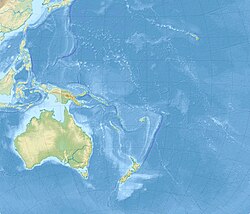| UNESCO World Heritage Site | |
|---|---|
 Northern tip of Grande Terre | |
| Location | New Caledonia (state party: France) |
| Includes |
|
| Criteria | Natural: (vii), (ix), (x) |
| Reference | 1115 |
| Inscription | 2008 (32nd Session) |
| Area | 1,574,300 ha (3,890,000 acres) |
| Buffer zone | 1,287,100 ha (3,180,000 acres) |
| Coordinates | 20°24′43″S164°33′59″E / 20.41194°S 164.56639°E |
The New Caledonian barrier reef is a barrier reef located in New Caledonia in the South Pacific, being the longest continuous barrier reef in the world and the third largest after the Great Barrier Reef of Australia and the Mesoamerican Barrier Reef.
Contents
The New Caledonian barrier reef surrounds Grande Terre, New Caledonia's largest island, as well as the Ile des Pins and several smaller islands, reaching a length of 1,500 kilometres (930 mi). The reef encloses a lagoon of 24,000 square kilometres (9,300 sq mi), which has an average depth of 25 metres (82 ft). The reefs lie up to 30 kilometres (19 mi) from the shore, but extend almost 200 kilometres (120 mi) to the Entrecasteaux reefs in the northwest. This northwestern extension encloses the Belep Islands and other sand cays. Several natural passages open out to the ocean. The Boulari passage, which leads to Nouméa, the capital and chief port of New Caledonia, is marked by the Amédée lighthouse.
In 2008, the barrier reef and its enclosing lagoon was inscribed on the UNESCO World Heritage List for its outstanding beauty, its unique geography as a reef entirely encircling Grande Terre, and its exceptional marine diversity (in particular its coral diversity). [1]




